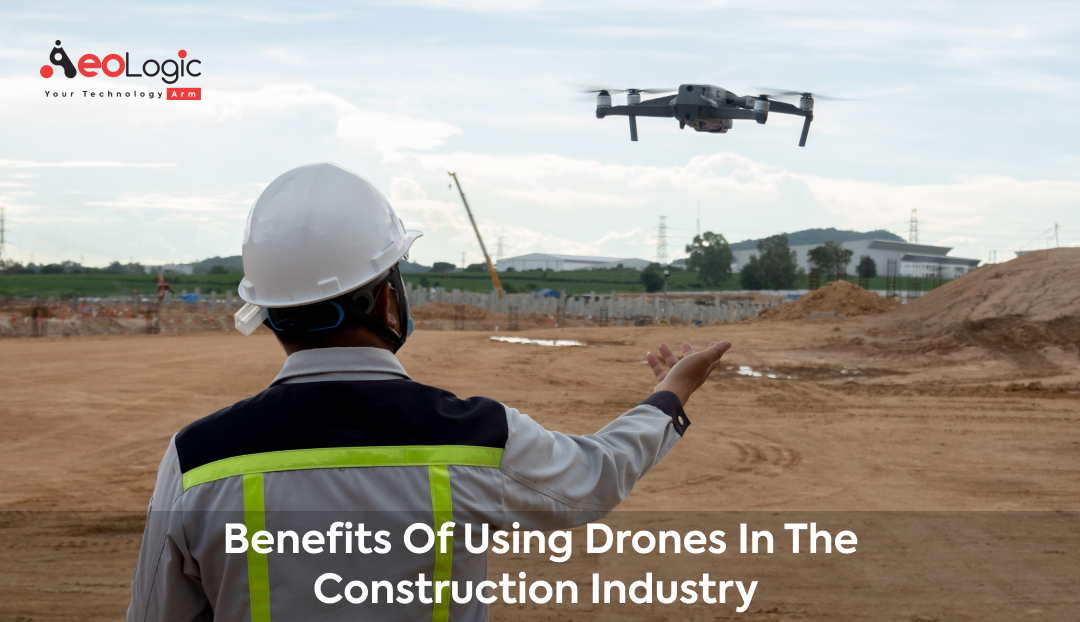A significant number of firms have transitioned from using drones as a specialized technology to using them as an everyday utility. Drones have fast become a successful tool for enterprises of all kinds. It is abundantly clear that the utilization of drones is advantageous for a wide variety of businesses, ranging from agriculture to real estate. With that being said, there is one sector that stands out as an early adopter and innovator of this technology. The use of drones in the construction industry has become widespread, and the numerous advantages that drones bring to the construction industry cannot be overstated.
According to a McKinsey analysis, construction and related spending contribute to 13% of global GDP. While other sectors have steadily increased productivity at significant levels, the construction industry’s annual productivity growth has averaged only 1% over the last 20 years. McKinsey suggested seven avenues for increasing construction productivity by 50-60%.
Let’s explore some of the benefits of using drones in construction industry.
1. Monitoring of the Construction Project’s Progress
Performing their work and concurrently capturing it through photography is a challenging dual task that many construction-related companies must attempt to accomplish simultaneously. The inability to concentrate that results from multitasking can make this activity potentially hazardous to one’s safety. There is also the possibility that it will result in a decrease in overall work quality because employees will be distracted by an additional aspect of their job.
However, it is essential to take images at regular intervals since they supply project managers with essential information regarding the development of the site. This enables them to make decisions regarding the subsequent steps and guarantee that the deadline is being adhered to. They also provide essential information to customers and investors, allowing them to stay informed about the construction process along the course of the project.
Also Read: The Role of Custom Software Development in the Construction Sector
2. Maximized Efficiency and Responsibility
In the process of planning, bidding, and forecasting, the development of project schedules as well as look-ahead schedules is critically significant. To estimate the amount of time and money required to finish activities and projects in general, labor hours and productivity rates are utilized respectively. The use of a construction unmanned aerial vehicle (UAV) assists senior management in observing site concerns that have an impact on productivity and accountability when the development of a project does not match up with expectations.
For the purposes of record keeping, accounting, and payment, the tracking and certification of manhours are also fundamentally important. This is especially true for work that is performed late at night, which is typically compensated at a higher rate. The use of drones can be of assistance to businesses that provide oversight and verification by ensuring that the task was carried out in the appropriate location, at the appropriate time, and by the appropriate individuals.
3. Managing and Tracking Equipment
Managers of construction projects, engineers of construction projects, and superintendents of construction projects are required to monitor multiple aspects of their projects. In addition to the execution of the project and the labor provided, it is essential to keep track of the equipment. There are typically varying charge rates for equipment that is in use, equipment that is idling, and equipment that is on standby depending on whether or not the work is being added to the contract through a change order.
UAVs can be of assistance in the management of projects, the negotiation of costs, and the verification of tools and machinery. Leaders can also benefit from the use of drones in contraction insudtry to facilitate communication with equipment owners and service staff regarding malfunctions and breakdowns. Both of these issues can result in delays in the project as well as additional costs.
Also Read: How Hyper-Automation is Transforming the Construction Industry
4. Advantages in Marketing
Despite the importance of websites for advertising and branding in today’s businesses, many construction company websites do not have enough photos to showcase their work to potential clients. This ought to become less common as time goes on thanks to drone photography and videography used in the building industry.
The quality and marketability of stock photography is drastically different from that of construction drone photography. Drones in construction can be configured to take high-quality, accurate aerial photographs. One more advantage of drone photography over ground photography is the ability to get aerial photos of the entire site.
Drones in construction may access areas and get perspectives that people would have a very hard time getting to by themselves, as previously stated. As a result, you get pictures of astonishing quality that record angles in a clever and modern style.
In addition, many different types of media can make use of drone footage. Your construction company can establish a contemporary brand and differentiate itself using many forms of media, such as social media, websites, and print publications.
5. Improved Decision-Making and Data Quality
It is essential to have access to data when working on a major construction site.
The trouble with data, however, is that it is always getting older. For example, excessive rainfall might cause a site to change considerably overnight, which can change the reality of the work that has to be done.
This delay could result in setbacks to the project, which could result in costly delays. If problems are missed for even a few days while a fresh site report is being generated, the delay could result in significant delays. By giving data that is collected in real-time, drones enable project managers to make decisions that are easier to understand and more informed.
6. Effective Planning
All of the information that is gathered by a drone can be utilized to enhance project planning, by assisting in the provision of an accurate picture of the location before the commencement of construction.
Photographs, movies, orthomosaics, and three-dimensional models of a location that were created using data from a drone can assist planners in visualizing the finished product.
It is also possible to utilize 3D models to identify elevation variations and drainage zones, which can be extremely helpful in selecting where to dig, build, or store stockpiles that are required for the building project.
7. Improve Repeatability and Scalability
It is possible for a construction company to rapidly grow the usage of drones once it has begun incorporating them into its workflows. This increases the likelihood that operations will be predictable and routine.
For large organizations, this may entail a rollout of drone operations across multiple locations, which would provide coverage across the entire country and enable immediate visual insights into the state of all the projects that are now being worked on.
Imagine if you could pull up a dashboard and be presented with a real-time view that displays the current status of every project that your organization is working on. This data can be useful not only for the planning of projects but also for maintaining relationships with customers. It enables you to provide customers with updates that demonstrate to them exactly how much progress has been made in the work through the use of photographs that were taken within the past twenty-four hours.
8. Workers Protection
It was reported by the Bureau of Labor Statistics that there were 1,102 fatalities among construction workers in the year 2019. Above twenty percent of all deaths that occur on the job. As a result of this significant share, construction is considered to be one of the most hazardous sectors in the United States.
Fortunately, drones have the potential to reduce some of this risk, and the widespread usage of drones has the potential to play a significant part in making this business safer in the future.
The use of drones proves to be extremely beneficial for roof inspections. Construction drone photography has the potential to reduce the requirement for physical roof inspections, which can entail rooftops that are damp, slippery, or in situations that are potentially unstable.
When there is a drone monitoring the site, it is also simpler for managers to keep track of the progress and well-being of workers, identify any potential impediments or issues, and anticipate any demands that workers could have. A significant improvement in worker protection can be achieved through the use of drones in construction safety.
Final Words
The use of drones in construction workflow has the potential to dramatically transform the operations of your company throughout the entire process of bidding, planning, and building.
Do you want to begin reaping the benefits that drones offer in your construction work? Assistance is available from Aeologic Technologies.
With thousands of hours of experience in the field, we have assembled a team of highly skilled drone pilots who are ready to assist you in gathering the data that you require.






